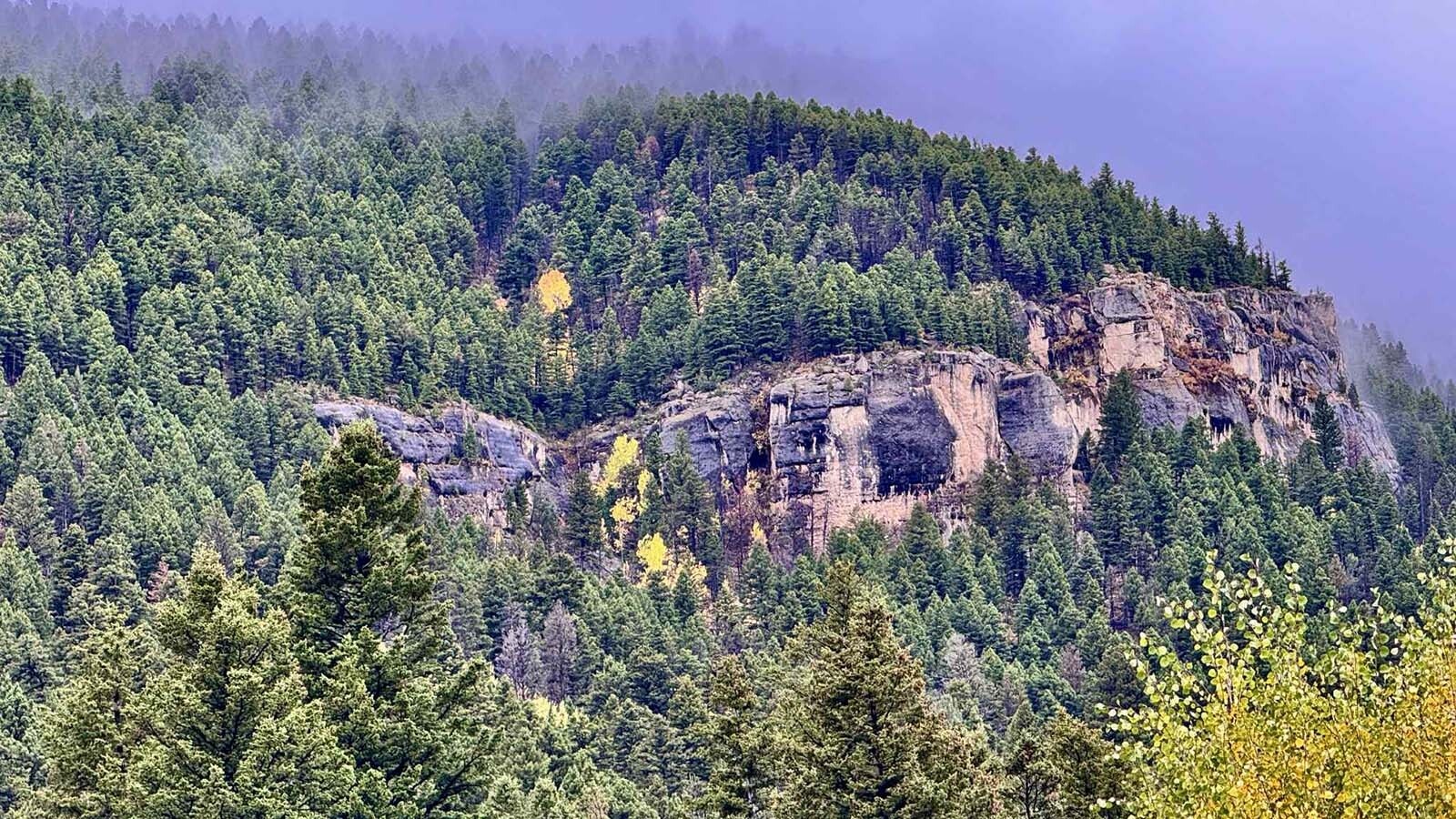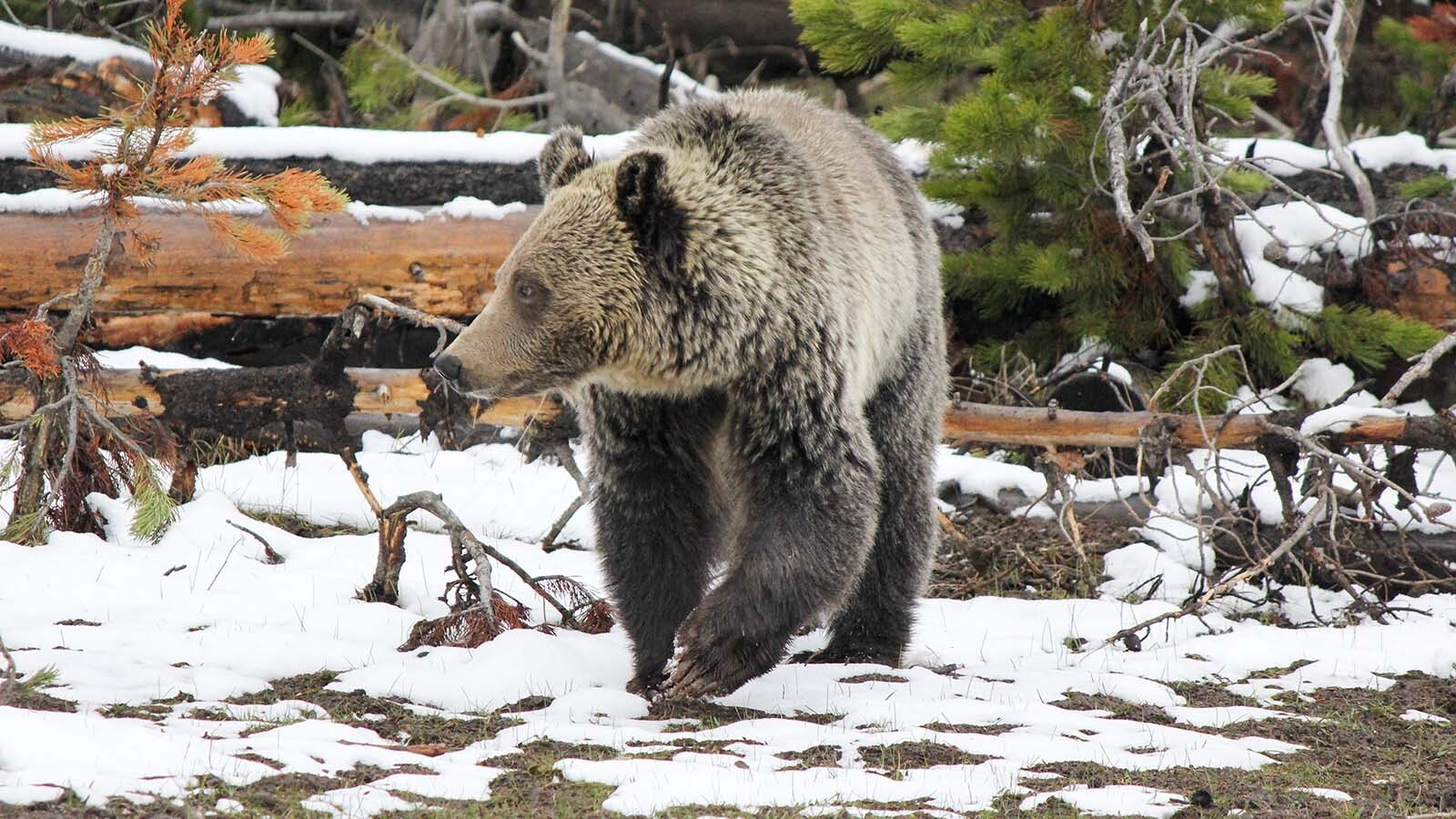Lander resident Rose Vowles has a particular spot she likes to visit in Sinks Canyon State Park when the fall foliage reaches its peak. Nearly every year, she checks on the color of one particular aspen tree growing on a ledge of rock on the canyon wall.
This year, Vowles got a wonderful surprise. There was a cascading column of aspen trees descending through a drainage from the ridge above.
“Instead of a waterfall, it was a leaf fall,” Vowles said. “I always stop at that one little spot to see ‘my tree,’ but this year all the other trees were visible and colorful. It's just so interesting.”
Vowles got a few photos of the “leaf fall” when the aspens reached their peak color on Oct. 5. The aspens on top of the ridge were a vibrant orange, while the aspens descending through the drainage were displaying their iconic gold.
The rest of the canyon was enveloped in a layer of fog. For Vowles, her leaf fall photos were the highlight of an already fantastic fall of foliage.
“I have never seen it like that before,” she said.

All In The Family
Aspens are one of the most unique trees in North America. A grove of aspens isn’t a collection of individual trees, but rather a collection of clones grown from a single seed and root system.
“Some people say it's the largest terrestrial organism on the planet,” said Shane Smith, horticulturist and founder/director emeritus of the Cheyenne Botanic Gardens. “I can't guarantee that, but they’re pretty darn big.”
“Pando,” a quaking aspen clone in Utah’s Fishlake National Forest, is widely recognized as the world’s largest tree. Its root system stretches across 106 acres.
Wyoming’s aspen trees might not be that large, but their multi-stem tree growth can create similarly spectacular and sensitive groves. Something that impacts the health of one tree can create a detrimental domino effect across the entire grove.
That’s what the U.S. Forest Service, the Wyoming State Forestry Division, and the Mule Deer Foundation have discovered as they work to restore Aspen Alley in the Sierra Madre Mountains. They tore down and ground up several of the standing trees that were dead or dying, so that new shoots could grow happy and healthy.
“It’s rare to see a single aspen,” Smith said. “That partially explains why aspens are happier in groves than they are in yards. I tend not to recommend people grow aspen trees as a landscape option. They really don't like that sort of situation, and they aren’t nearly as healthy.”

One Or Many?
When Smith looked at Vowles’s photos of the leaf fall in Sinks Canyon, he couldn’t be sure if he was looking at an individual grove or multiple groves. There’s quite a distance between the aspens on top of the ledge and those below.
“They’re in the same drainage, so they might well be connected, but it’s hard to say for sure,” he said.
Smith explained that some aspen groves consist of different trees that have gradually grown together. They are different organisms but grow and even communicate as if they’re a singular unit.
“Rather than sprouting from the same root, some aspens have been found with roots that connected and commingled. They can share nutrients with each other, making the entire grove healthier. If one tree is experiencing danger, it can actually send a message to the other trees.”
Many tree species, including aspens, achieve the same results through mycorrhizal fungi. Studies have shown that the stem diameter, height, and number of root tips in aspen groves increased when the fungi were present in their native soil.
Mycorrhizal fungi aren’t present in the Rocky Mountain region, so the aspens in Sinks Canyon probably don’t have those fungal perks. Still, it could be something special going on there.
“It's not a hard, fast rule that when you see a clump of aspens, they're always the same aspen,” Smith said.
Same Differences
Smith believed it’s possible that the Sinks Canyon leaf fall could be two aspen groves that have grown together through the drainage. It’s also possible that they’re all shoots from the same system that have spread out in a unique way.
Either way, the slight difference in altitude could explain some differences between the aspens. Even if it’s one grove spread through the drainage, the trees could be very different from top to bottom.
“The trees up top could be different from those down below,” Smith said. “You might get a pooling of colder air the lower you go, which might give you a different look to the trees. A tree might be exposed to more wind in one place than another, with the same result. They might look like different trees even if the same tree.”
Regardless, the aspens looked healthy to Smith. If they aren’t part of the same grove, he suspects the aspens are connected in some way.
“The further the distance, the less likely they’re connected,” he said. “I don’t know what the distance is between those aspens, but if they’re healthy, it definitely increases the possibility.”
Vowles has been visiting the leaf fall for years and is consistently surprised by its strikingly orange leaves. Seeing an additional splash of vibrant color streaking down the walls of Sinks Canyon was a special surprise.
“I've never noticed that there were other aspens falling down from the top one,” she said. “It’s different from every other year I’ve stopped there. It was pretty cool.”
Andrew Rossi can be reached at arossi@cowboystatedaily.com.






